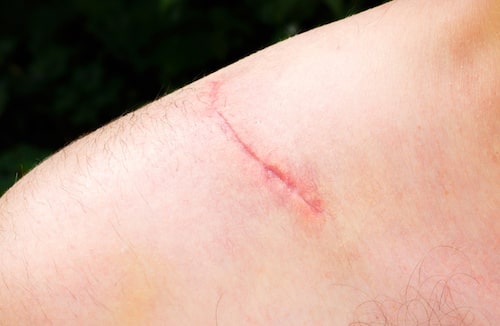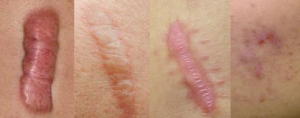Following an injury or surgical procedure, scars often form on the body. These serve as reminders of the physical trauma the body has endured. Not only do people not like the look of scars, the scars on the body can also heal incorrectly and cause further damage. Scars can cause tissue to contract which can limit the mobility of that area of the body, induce pain and cause basic functional problems soon after.
Scar Treatments are Highly Requested
Many experts agree that seeking treatment for scars is one of the most requested treatments in the world. “It’s an astronomical burden on our healthcare system,” says plastic surgeon Steven Moran, chair of the Division of Plastic Surgery and Reconstructive Surgery at the Mayo Clinic’s Center for Reconstructive Transplant Surgery.
As long as people can remember, they have wanted to make their scars disappear. Whether it is because of a painful memory or just an unsightly scar in a very visible spot, people have looked for any way to get rid of scars for centuries. They have gone to extreme lengths to try and remove them including surgical removal and freezing scars with liquid nitrogen. These procedures have produced middling to unsuccessful results. For years people have spent large amounts of money for their scars to only look marginally better.
What if there was a way, instead of trying to get rid of scars after they form, to prevent scars from forming at all? While there is no magical fix to make scars disappear forever, medical experts have discovered ways to prevent them all together. Two recent studies have shown researchers discovering new ways to do exactly that. While it may sound like something straight out of a movie, topical or injected medicines may actually cause tissue to grow back. This tissue can also grow back complete with hair follicles, sweat glands, skin oil and even pores. It may sound like science fiction, but it might soon become a reality for many. Before looking into the future, let’s discuss different types of scarring as well as the current treatment methods for dealing with them.

Types of Scarring
When the layer of skin, called the dermis, is injured or damaged, the tissue usually heals improperly. This forms a scar. Scars can also form when, during surgery, muscle is stitched together. Another common cause of scarring is when a ligament or tendon is torn.
Cells are arranged in a highly organized fashion in healthy, non-injured tissue. But when that tissue becomes damaged, collagen can flow in to fill up the wound. Collagen is of the utmost importance to the proper healing process. However, the body will sometimes send in too much collagen. When there is too much collagen in a small space of skin, as is the case with many different scars, there may be visible side effects on the surface of the skin. These include raised tissue or reddened tissue.
The scars caused by too many proteins like collagen are called hypertrophic scars. These often appear red in color, elevated and hard to the touch. They will look quite different compared to the surrounding tissue. In other cases of different scar types, collagen and other proteins can accidentally move outside the boundaries of the wound, causing bumps in the surrounding skin called keloids. This is another type of scar. These may become noticeable months or even years after the original injury. This type of scar can also cause intense itching and discomfort. The likelihood of developing a severe scar such as keloids mainly depends how well the wound was treated. However, ethnicity and genetics also play a part in their formation.
Present-Day Treatment Methods
Doctors currently have many different ways to treat scars. Dermatologists apply tape to relieve the tension around, or on, the wound which lessens the chance of developing a scar. They also use silicone gels, sheets and other products that can prevent scars by keeping the injury properly hydrated. Some medical providers also inject cortisone or other steroids to reduce the thickness of an incoming scar. Other treatment methods include laser therapy, freezing, onion extract, and even radiation therapy! Currently, the best way to prevent an injury from turning into a severe scar is to keep the wound clean and wet, avoid more trauma to the impacted area and apply sunscreen.
Scar Treatment Methods in the Future
Recently, scientists have discussed studies that indicate injecting a drug into the surrounding edge of a skin injury could prevent keloid and hypertrophic scars from forming into severe scars. In the discussed study, scientists were able to induce the regeneration of cells. When the body starts regenerating cells, it also naturally starts to produce more skin cells and hair follicles. If this treatment continues to show success, any tissue that was once a wound or a scar can actually operate like normal, healthy tissue.

